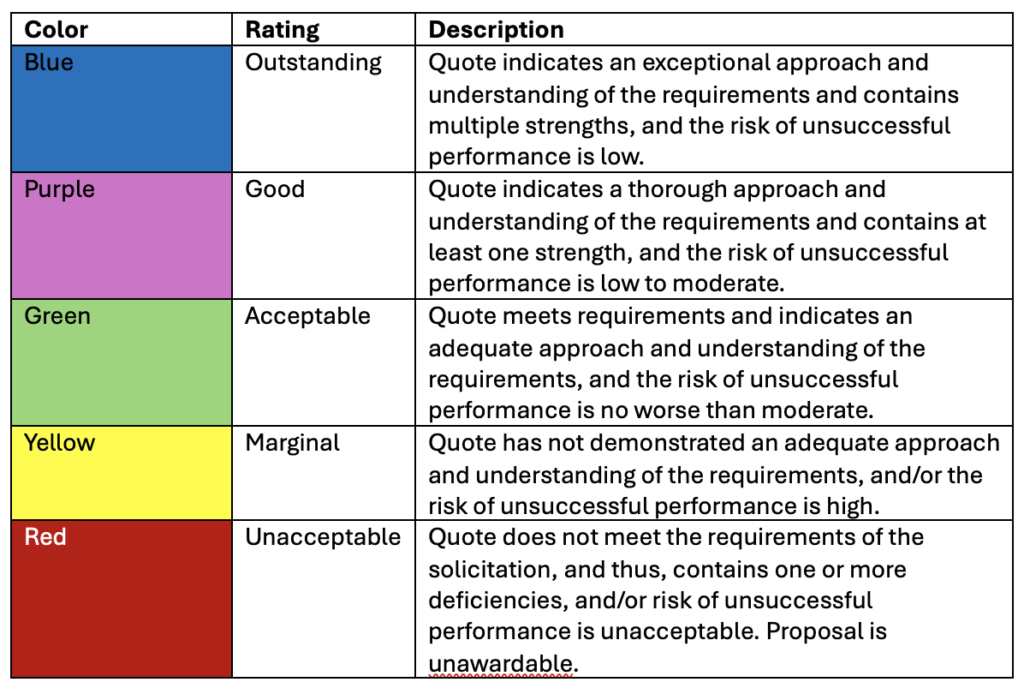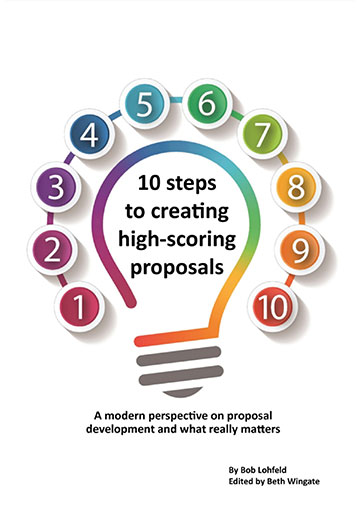How to Win the $927M DISA ModEL BPA

If you’re a General Services Administration (GSA) Multiple Award Schedule (MAS) contract holder looking for an opportunity to work with other expert companies to provide services and grow your business, the search is over! The Defense Information Systems Agency (DISA) Modernization, Engineering, Lifecycle Refresh (ModEL) Blanket Purchase Agreement (BPA) is a hidden treasure amongst upcoming solicitations.
At a Glance
DISA is issuing a BPA for the modernization of its Joint Service Provider (JSP) through the ModEL program. Offerors must participate in a Contractor Team Agreement (CTA), which permits up to five GSA schedule contractors to be part of the agreement. Among these, only one member, designated as the CTA lead, may submit a request for quote (RFQ). Each CTA participant must have their own GSA Master Services Agreement (MSA). Tracking and solicitation information details are outlined in Tables 1, 2, and 3 below.
Table 1: Tracking Information
| Item | Identification Number |
| GSA Tracking Number/Sam.gov Notice ID | 832369812 |
| GovWin ID | 229720 |
| Task order title | ModEL |
| NAICS code | 541512 |
| Order type | Firm-Fixed Price |
| Period of performance | One-year base plus four one-year option periods |
| Method of evaluation | Best Value Trade Off |
| Contract value | $927M |
| Number of awards | Up to five CTAs will be selected for an award. Each CTA team member must have their own GSA schedule |
Table 2: Solicitation Information
| Date | Description |
| November 27, 2024 | Draft solicitation issued |
| December 4, 2024 | Pre-solicitation conference |
| April 25, 2025 | Expected RFP release date |
| TBD | Expected award date |
Table 3: Solicitation Requirements
| RFQ Item | Page Limit | CTA or Each Member |
| Organizational and Consultant Conflict of Interest (OCCI) Mitigation Plan | No limit | Each member |
| Section 508 Compliance | No limit | Each member |
| GSA Schedule | No limit | Each member |
| Attachment 5, FARS-DFARS Provisions and Clauses | No limit | Each member |
| Top-Secret Facility Clearance | 5 pages | Each member |
| CTA Agreement | No limit | CTA |
| SAM.gov Screen Shot | No limit | Each member |
| Technical/Management (Factor 1) Subfactor 1: Contractor Teaming Agreement StructureSubfactor 2: Staffing PlanSubfactor 3: Contractor Teaming Agreement ManagementSubfactor 4: Zero Trust DeploymentSubfactor 5: Cloud Engineering ServicesSubfactor 6: Customer and Mission Partner Requirements Analysis | 30 Pages | CTA |
| Price Factor (Factor 1) BPA Pricing Worksheet | N/A | CTA |
| Small Business Participation (Factor 3) Small Business Participation Plan | N/A | CTA |
Performance Work Statement
The draft Performance Work Statement (PWS) released in October 2024 outlines four distinct task areas for this contract. These task areas are as follows:
Task Area 1: Program Management
Overview: Manage and oversee the BPA and related call orders.
- Integrate project activities effectively.
- Coordinate cost, schedule, and scope across multiple concurrent projects.
- Collaborate with CTA members to ensure alignment with requirements and objectives.
Task Area 2: Solutions Development
Overview: Modernize the Government’s enterprise IT infrastructure to meet current and future needs.
- Conduct a lifecycle refresh (LCR) to reduce technical and cybersecurity debt.
- Optimize the existing IT architecture for improved efficiency.
- Design and implement new technological systems, including cloud services, zero trust, and IPv6.
Task Area 3: Customer Engineering Projects
Overview: Support mission requirements for specific customers.
- Deploy Commercial-off-the-Shelf (COTS) and Government Off-the-Shelf (GOTS) applications.
- Establish network connectivity between customer and government networks (e.g., Site-to-Site VPN, cloud).
- Upgrade and deploy customer-owned IT equipment in compliance with J6 Command, Control, Communications, Computers, and Cyber Capability (C4E) standards.
Task Area 4: Telecom and Networking Professional Services
Overview: Assist in onboarding new customer agencies or organizations into the Government IT environment.
- Migrate accounts, applications, and configurations from legacy environments.
- Extend physical network connectivity to new office locations.
- Deploy J6 C4E workstation equipment to new users.
Draft Evaluation Criteria
This BPA will be awarded based on the best value to the government. Proposals will be evaluated in two phases. Phase 1 will evaluate Technical Subfactors 1 and 2 on a pass/fail basis. Definitions are provided in Table 4 below:
Table 4: Phase 1 Subfactors and Pass/Fail Requirements
| Rating | Definition |
| Pass | Quotation meets the requirements of the solicitation |
| Fail | Quotation does not meet the requirements of the solicitation |
In Phase 2, evaluators will evaluate responses to the PWS requirements for Subfactors 3-6, which are considered equally important during the evaluation process.
The rating requirements for Technical Subfactors 3-6 are provided in Table 5.
Table 5: Evaluation Criteria for Subfactors 3-6

Phase 2 will also include the evaluations of Factor 2 (Price) and Factor 3 (Small Business Participation). The evaluation criteria are provided in Table 6.
Table 6: Phase 2 Evaluation Factors for Factors 2 and 3
| Factor | Evaluation Criteria |
| Factor 2: Price | Prices will be evaluated for reasonableness and completeness using cost and price analysis techniques as described in FAR 15.404. |
| Factor 3: Small Business Participation Plan Removing Barriers to Entry for Small Businesses | The Small Business Participation Plan will be evaluated on the level of proposed participation of small businesses. To be acceptable, the quotation must demonstrate an adequate approach of the small business objectives. DISA wants to remove barriers to entry for small businesses. One of those barriers is the requirement for a facility site clearance (FCL). This solicitation rand any resultant contract/BPA/order requires the prime contractor/CTA to sponsor at least two FCL’s for small businesses during the first year. To be rated “Acceptable,” the CTA must provide a written guarantee that they will sponsor two or more FCL’s to small business during the first year of performance of this BPA. |
Hints to Offerors
Interested offerors should be prepared to launch full proposal activities on April 25th. Although you may have done preliminary work, you will still need to revisit the solicitation for changes that could affect what has been prepared. Consider bringing in outside support to provide a set of fresh eyes. Offerors need to focus on achieving an Outstanding rating on Technical Subfactors 3-6. Utilize what you’ve learned in our Strength-Based WinningÒ class to ensure your strengths are easily identifiable to evaluators.
Conclusion
The DISA ModEL provides the government with a quick way to acquire network, telecommunications, and engineering services. Interested offerors must review the solicitation documents carefully and ensure they have the right teammates on their CTA.
Relevant Information
By Dana Katalinas, Vice President, APMP Member, GPA Member
Lohfeld Consulting Group has proven results specializing in helping companies create winning captures and proposals. As the premier capture and proposal services consulting firm focused exclusively on government markets, we provide expert assistance to government contractors in Capture Planning and Strategy, Proposal Management and Writing, Capture and Proposal Process and Infrastructure, and Training. In the last 3 years, we’ve supported over 550 proposals winning more than $170B for our clients—including the Top 10 government contractors. Lohfeld Consulting Group is your “go-to” capture and proposal source! Start winning by contacting us at www.lohfeldconsulting.com and join us on LinkedIn, Facebook, and YouTube(TM).
Paperback or Kindle
10 steps to creating high-scoring proposals
by Bob Lohfeld
contributors Edited by Beth Wingate
Subscribe to our free ebrief
Teaming friends, frenemies, and enemies—12 tips to mitigate harmful effects
Did you know that contracting officers spend up to 20% of their time mitigating disputes between teaming partners? In an informal poll we conducted on LinkedIn last month, 40% of respondents classified their teaming partners as “frenemies” on their last bid.
Explore Further
- Advice (539)
- AI (28)
- APMP (18)
- Army MAPS Contracts (3)
- Business Development (294)
- Capture Management (266)
- Complex Technology Grants Services (26)
- Favorite Books (5)
- GenAI (4)
- Go-to-Market (27)
- Graphics (5)
- Lohfeld Books (2)
- NASA SEWP VI Contracts (2)
- Navy SeaPort-NxG Contracts (2)
- NIST MSE Grants (1)
- NIST NAPMP Grants (2)
- Past Performance (63)
- Post-submission Phase (14)
- Pre-RFP Preparation (264)
- Proposal Management (339)
- Proposal Production (75)
- Proposal Reviews (38)
- Proposal Writing (107)
- Pursuit Phase (108)
- Research Report (4)
- Resources (63)
- Tools & Tips (421)
- Training (13)
- Uncategorized (223)

Sign Up for INSIGHTS and Download your FREE book
We'd love to help you with your proposals. Enjoy our complimentary Lohfeld Consulting Group Capture & Proposal Insights & Tips book with your FREE subscription to our Insights Newsletter.
GET YOUR FREE BOOK


